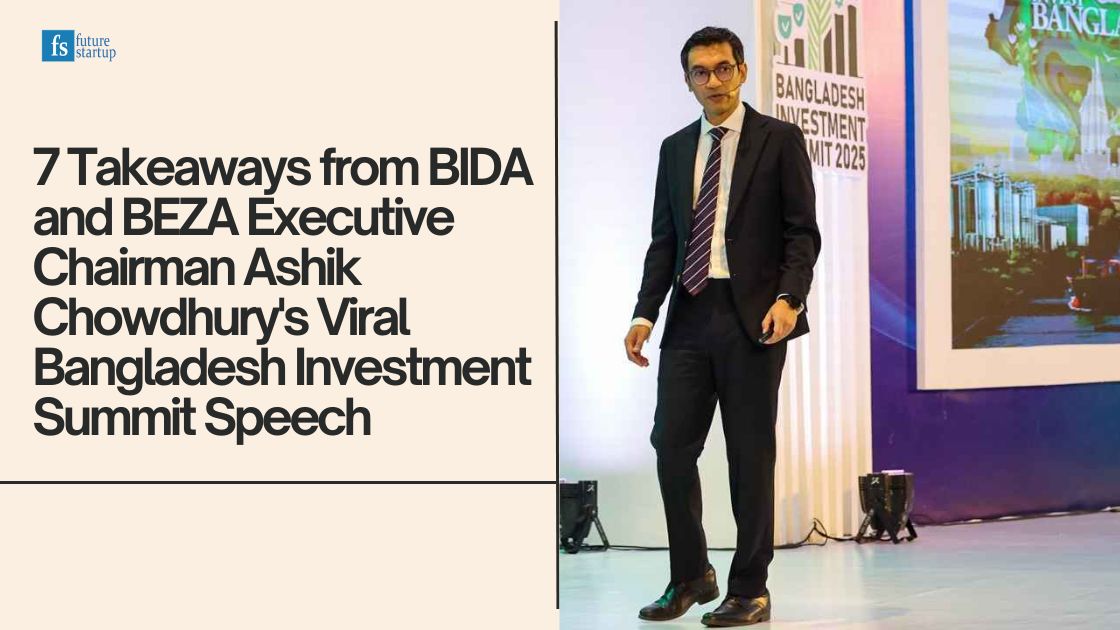
In a compelling address at the Bangladesh Investment Summit 2025, held in Dhaka between April 7 and 10, Ashik Chowdhury, Executive Chairman of BIDA and BEZA, outlined an ambitious vision for the country's economic future.
His speech, which has since gone viral, presented a roadmap for transforming Bangladesh into a regional manufacturing powerhouse by 2035.
Here are the seven takeaways from Chowdhury's now viral address:
Chowdhury articulated a bold vision of Bangladesh evolving into a regional manufacturing powerhouse by 2035. He described the country as positioned to connect East to West, serving as a critical bridge between the Himalayas and the Bay of Bengal.
This strategic positioning, according to Chowdhury, will attract both global and local investors looking to export globally. Rather than merely aspiring to be a rising economy, he envisions discussions at future investment conferences centered on this new reality.
A significant portion of Chowdhury's speech highlighted the pivotal moment of August 5th, 2024, when Bangladesh's youth took to the streets demanding transparency, opportunity, democracy, and freedom of speech.
This movement, which he referred to as the "August revolution," demonstrated the high expectations of Bangladesh's young, globally aware population.
Chowdhury emphasized the need to unlock and channel this energy toward employment generation and industrialization, noting that young Bangladeshis aspire to see their country reach the standards of Singapore and Bangkok within 5-10 years.
The BIDA and BEZA chairman detailed Bangladesh's impressive market credentials: a domestic market of 180 million people, with a median age of 26 years. He highlighted that the middle and affluent class, comprising approximately 35 million people, equals the entire population of Malaysia.
Most notably, Chowdhury pointed to the success stories of long-term foreign investors in Bangladesh who have experienced significantly higher returns compared to global averages, providing concrete evidence of the country's investment potential.
One of the most strategic shifts proposed by Chowdhury was redefining Bangladesh's market appeal. He urged moving beyond focusing solely on the 180 million domestic consumers to emphasize the much larger regional market that can be served from Bangladesh.
His vision includes establishing Bangladesh as a logistical hub facilitating two-way investment and trade flows.
Chowdhury detailed several practical initiatives BIDA has undertaken to improve Bangladesh's business environment:
Going beyond purely economic incentives, Chowdhury made a compelling emotional appeal to potential investors: to consider the transformational journey they would become part of by investing in Bangladesh.
He spoke passionately about the "odd mixture of warmth and resilience" that characterizes the Bangladeshi people, alongside the country's century-old culture and shared values, suggesting that investment in Bangladesh offers more than just financial returns.
A recurring theme throughout Chowdhury's speech was the importance of improved communication between the government and private sector. The establishment of the private sector advisory council represents a significant step toward institutionalizing this dialogue at the highest levels of government.
This commitment to ongoing consultation signals a new era of public-private partnership in Bangladesh's economic development strategy.
Ashik Chowdhury's speech at the Bangladesh Investment Summit 2025 painted a picture of Bangladesh with a clear vision for the future. Driven by a young and aspirational population and actively working to improve its investment climate, Bangladesh is positioning itself to become a regional manufacturing hub.
The BIDA chairman's message went beyond highlighting economic opportunities to emphasize the broader impact and shared values involved in investing in Bangladesh's future.
While the vision articulated is ambitious, there remains the considerable task of translating these aspirations into tangible realities. The success of Bangladesh's economic transformation will ultimately depend on the effective implementation of the proposed initiatives, the sustainability of political reforms, and the country's ability to navigate regional competition and global economic uncertainties.
Nevertheless, the concrete steps outlined by BIDA, combined with the evident determination of its leadership and the undeniable energy of its young population, provide reasonable grounds for cautious optimism about Bangladesh's economic trajectory in the coming decade.
As investors and observers watch closely, Bangladesh stands at a potentially pivotal moment in its development story—one where bold vision meets practical action, and where challenges are acknowledged alongside opportunities.
The coming years will show whether this moment of ambition can indeed become the turning point that Chowdhury's address suggests is possible.
